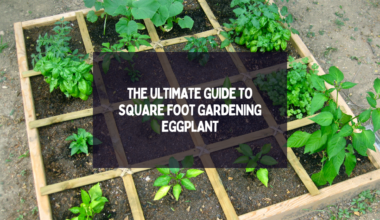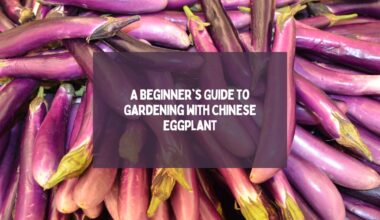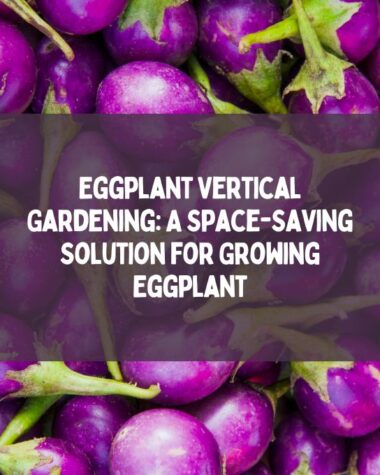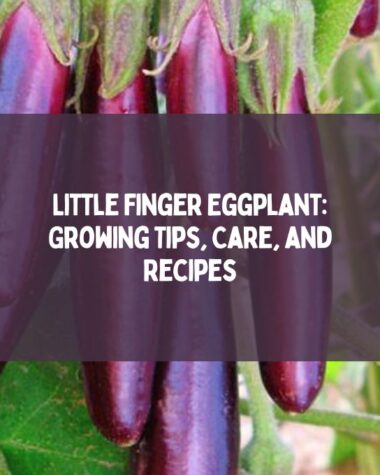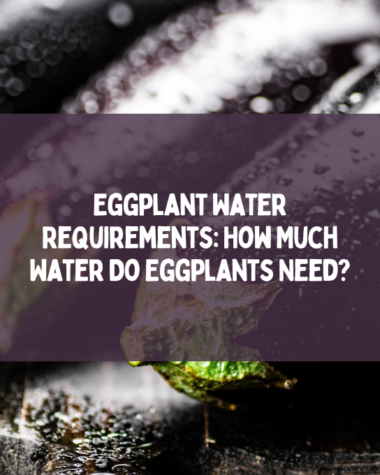Aubergine, better known as eggplant in the United States, is not only a versatile and delicious vegetable but also packed with an impressive array of health benefits. Growing your own aubergines can be incredibly rewarding when proper support techniques are utilized.
In this blog post, we’ll explore the numerous benefits of providing aubergine plant support and discuss essential tips and techniques to ensure strong growth and healthy yields from these plants.
The Importance Of Providing Aubergine Plant Support

Providing proper support for your aubergine plants is essential to prevent damage, increase yield and fruit quality, and encourage proper growth and development.
Here are the benefits of aubergine plant support.
Prevents Plant Damage
Providing proper support for your aubergine plants can prevent damage that may occur when they become too heavy or tall. Without adequate support, the weight of the fruit and growth can bend or break the stems, leaving your plant vulnerable to pests and diseases.
Additionally, improperly supported plants are more likely to suffer from sunburn and other environmental stressors.
The best way to avoid this damage is by pruning and training your aubergine plant regularly. This helps it maintain its proper shape while removing any dead leaves and branches that may be decaying at the base of the stem.
Adding mulch around the base of your plant will help keep moisture in a while preventing weed growth which can compete with fertilizers for nutrients needed for healthy growth.
Increases Yield And Fruit Quality
Providing your aubergine plant with proper support not only prevents damage but also increases crop yield and fruit quality. Without adequate support, the weight of the growing fruits can cause the stem to break, resulting in damage that can reduce both yield and fruit quality.
By using support structures in conjunction with pruning techniques for optimal air circulation and sunlight exposure, your aubergine plant will be able to produce more fruit while maintaining its overall health.
Encourages Proper Growth And Development
Providing proper support for your aubergine plants is essential to encourage their healthy growth and development. Without adequate support, the weight of the fruit can cause the branches to bend or break, leading to stunted growth and lower yields.
One way you can encourage proper growth is by using trellis systems or cages. These structures provide vertical support for the plants, allowing them to grow upright rather than sprawling out on the ground.
By providing the right type of support for your aubergine plants and taking care of their needs throughout their growing season, you’ll see a significant improvement in their yield and quality at harvest time.
Provides Stability During Strong Winds Or Heavy Fruit Production
Aubergine plants are known to produce a lot of fruit, which can weigh down the branches and cause them to snap during strong winds. Providing plant support is vital in preventing damage and increasing the yield of your crop.
With proper support structures, such as stakes or trellis systems, you can ensure that your plants stay healthy and continue producing throughout the growing season. Additionally, these support structures also provide stability when it comes to heavy fruit production.
Related Reading:
- The Ultimate Guide to Growing Eggplant Seedlings: Planting and Caring Tips
- 18 Common Aubergine Growing Problems and Their Solutions
- 16 Different Types of Aubergine You Need to Try
Different Types Of Aubergine Plant Support
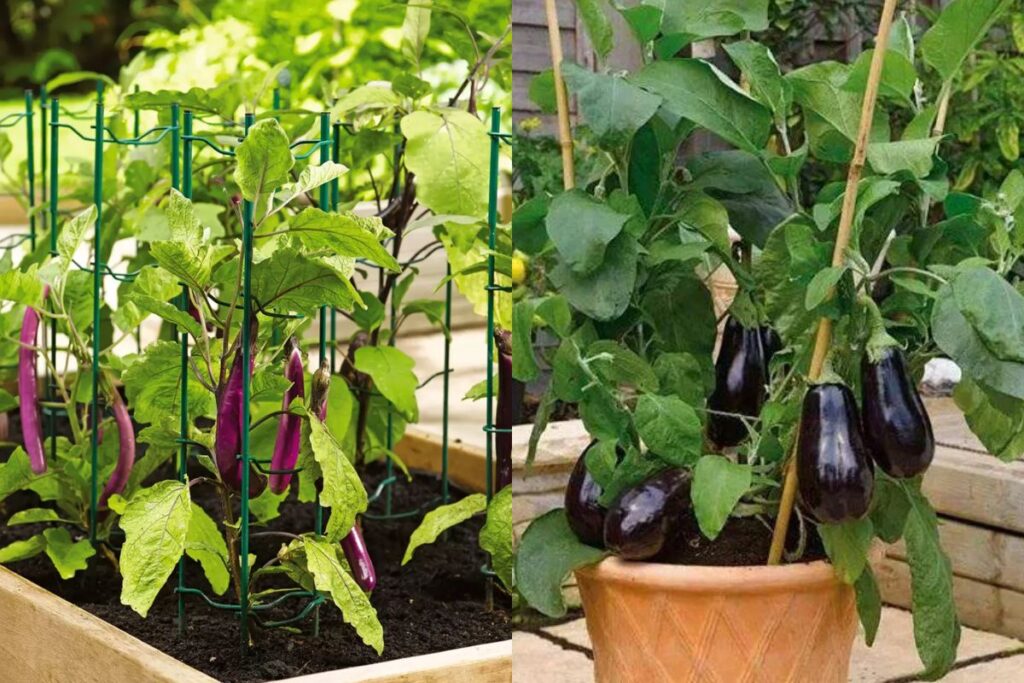
Proper support is crucial for growing healthy and productive aubergine plants. Here are some common types of support structures that you can use:
- Stakes and Cages
- Trellis Systems
- Tomato Cages
- Bamboo Poles
Here are details about these aubergine plant support types.
Stakes And Cages
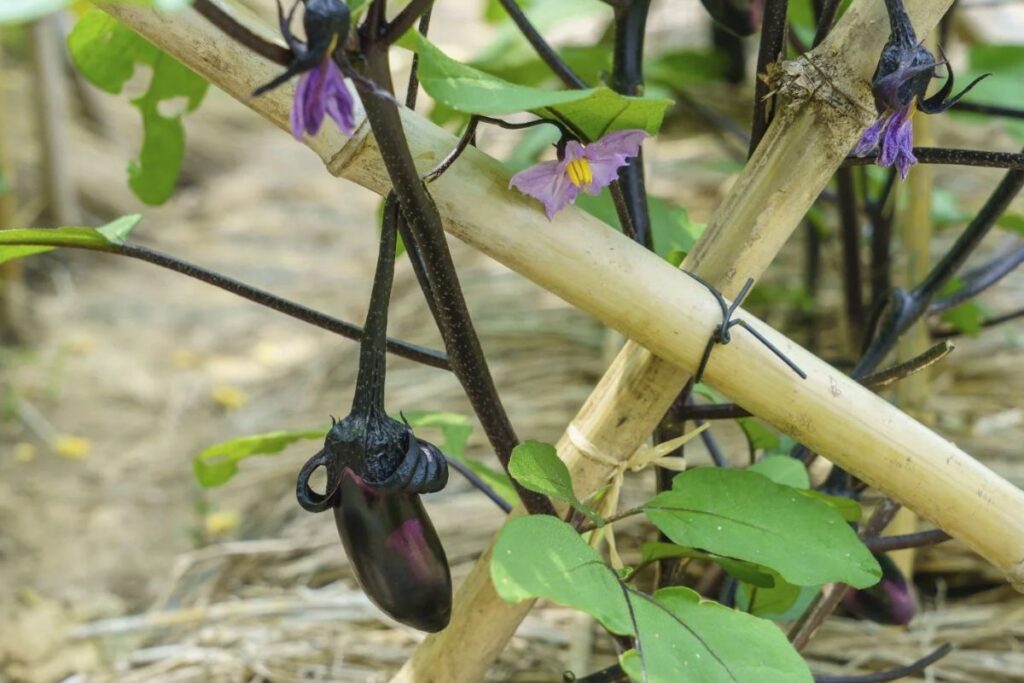
Stakes and cages are among the most popular aubergine plant support structures. Staking is ideal for smaller varieties, while cages are best suited for larger plants.
To stake an aubergine plant, you’ll need to use wooden stakes or metal rods that are at least 1 inch thick and taller than your plant’s mature height.
Cages, on the other hand, can be made from welded wire mesh or plastic netting. Simply place them around the base of your aubergine plant after planting them in raised beds or containers.
As the plant grows larger, prune any extra branches outside the cage to ensure proper support and air circulation inside.
Trellis Systems
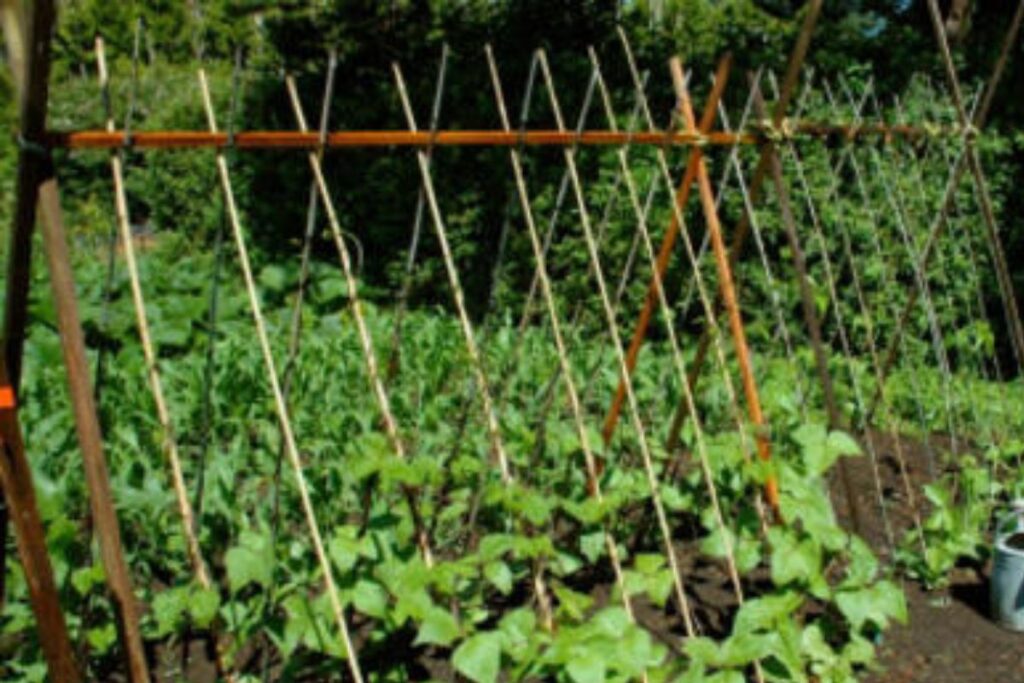
One effective method for supporting aubergine plants is by using trellis systems. These structures are typically made from wood or metal and consist of a series of horizontal bars that the plant can climb up as it grows.
This technique not only keeps the plant upright but also allows for easy access to the fruit when it’s ready to be harvested.
One type of trellis system that works particularly well with aubergines is called the “string trellis.” As the name suggests, this system involves running strings along each bar of the structure, which can be adjusted as needed to accommodate different plant sizes and shapes.
A major advantage of this approach is that it promotes proper air circulation around the leaves and stems, reducing the risk of disease and insect infestations.
Tomato Cages
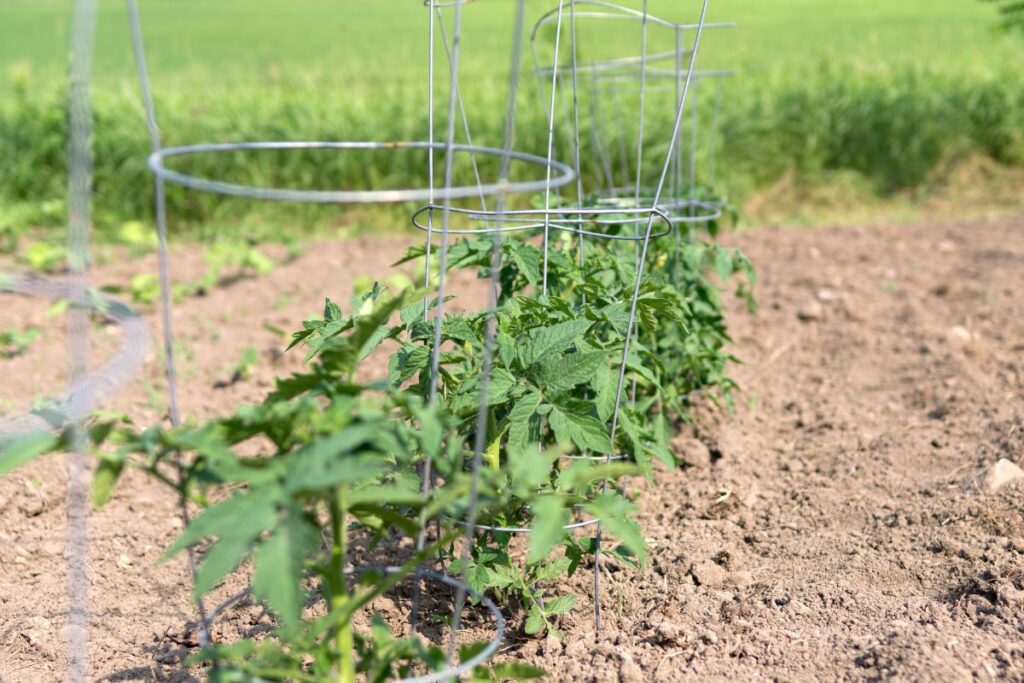
Another popular type of aubergine plant support is the tomato cage. These structures are usually made from wire mesh and are designed to be sturdy enough to hold up the weight of your aubergines as they grow.
They’re also relatively easy to use: simply push them into the ground around your plants when you first transplant them, making sure that each plant is centered in its cage, and then watch as the stems grow through the holes in the mesh.
Another great thing about tomato cages is that they allow for good air circulation around your plants, which can help prevent disease and promote healthy growth.
Bamboo Poles
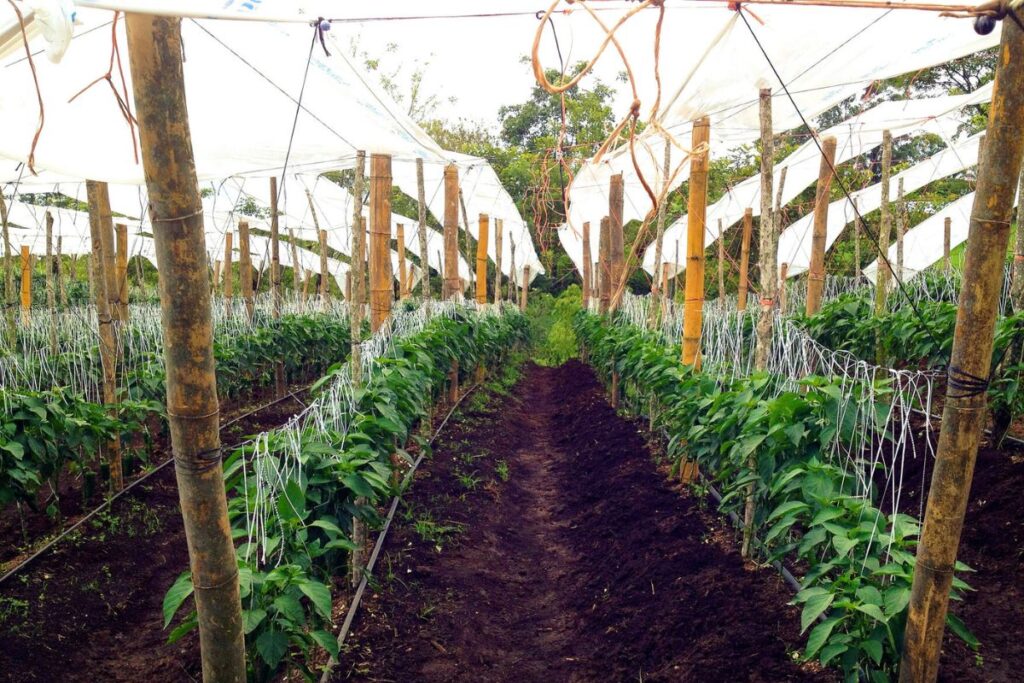
Bamboo poles are an excellent and cost-effective option for providing support to aubergine plants. They can be used individually, or in combination with other support structures like trellises or cages.
To use bamboo poles for aubergine support, simply push them into the ground around the base of the plant and secure them in place with garden twine. As the plant grows taller, you can add additional layers of twine to keep it upright.
One tip when using bamboo poles is to choose thick ones that are at least 6 feet tall, so they do not bow under pressure from heavy fruits.
Whichever type of support structure you opt for, make sure it is tall enough to accommodate your plant’s full height and strong enough to withstand any strong winds or heavy fruit production. Remember to inspect your supports regularly throughout the growing season, adjusting them as needed, and pruning and training your plant as required for optimal growth!
Related Reading:
- Complete Aubergine Planting Guide: Tips and Strategies for Successful Cultivation
- How To Properly Tomato Support and Tie Tomato Plants (& 5 Common Mistakes)
- Cucumber Plant Care Tips: How to Keep Your Plant Healthy and Happy
Essential Techniques For Growing Aubergines With Proper Support
To ensure the proper growth and development of your aubergine plants, it is essential to use the right support structures, such as stakes, trellis systems, tomato cages, or bamboo poles, and regularly inspect and adjust them as needed.
Using Raised Garden Beds For Better Soil Quality And Drainage
Raised garden beds are becoming increasingly popular among gardeners and for a good reason. By elevating the soil level above ground level, raised garden beds can improve the quality of your soil by allowing better drainage and aeration.
Raised garden beds also provide other advantages over traditional in-ground planting methods. They reduce soil erosion and simplify irrigation, making it easier to keep your plants hydrated during dry spells.
Additionally, raised garden beds can make gardening more accessible by allowing you to tend to your plants comfortably without having to constantly bend down or kneel on the ground.
Choosing The Right Companion Plants For Pollination
Eggplant companion planting is essential in eggplant cultivation, and choosing the right plants can make a significant difference in crop yield. Aubergines are self-pollinating, but having pollinators nearby increases their fruit’s size and quality.
Bees love flowering herbs like basil, thyme, and oregano; planting them alongside your eggplants will not only support bee populations but also improve the plant’s health.
Other companion plants that promote healthy growth include;
- Marigolds (which deter pests)
- Nasturtiums (which attract predatory insects)
- Beans (which add nitrogen to the soil).
In addition to improving pollination rates and deterring pests, companion planting offers additional aesthetic benefits by adding color to your garden bed.
Properly Space And Position The Plant
It is essential to properly space and position your aubergine plant, as this will help ensure its proper growth and development. Proper spacing also aids in preventing the spread of diseases and pests while promoting good air circulation around the plant.
When planting aubergines, make sure to leave enough space between each seedling, usually about 2-3 feet apart. This distance allows for proper root development without competing for resources or overcrowding the area.
When it comes to growing a healthy crop of aubergines, ensuring that each plant has ample room to grow is crucial.
Regularly Inspect And Adjust Support Structures
It is essential to check and adjust the support structures of your aubergine plants regularly. This ensures that they stay upright and don’t get damaged by strong winds or heavy fruit production.
Inspecting your plant’s support structure also helps prevent any potential injuries caused by broken or bent stakes, cages, or trellis systems.
One simple way to do this is to look for any signs of wobbling or leaning in the plant stems, which could indicate that the current support system requires some adjustments.
You can also check if there are any frayed twines or ties that need replacing with new ones.
Prune And Train The Plant As Needed
Pruning and training your aubergine plant is an essential step for successful cultivation. Pruning helps to control the size of the plant, promote bushy growth, and remove diseased or damaged parts.
Training involves guiding the growth of the plant onto its support structure, ensuring that it grows in a controlled and supported manner.
To prune your aubergine plant, look for any dead, yellowing, or diseased leaves, stems, or fruits and carefully cut them off with sharp pruning shears.
Training your aubergine plant involves tying it to its support structure using soft ties such as twine or strips of cloth. This will help to prevent breakage during strong winds or heavy fruit production.
By keeping up with regular pruning and training techniques throughout the growing season you’ll be able to maintain healthy plants that will produce bountiful crops of delicious eggplants!
Use Appropriate Materials And Tools
When supporting your aubergine plants, it’s important to choose the right materials and tools. There are various options available, including stakes, cages, trellis systems, tomato cages, and bamboo poles.
For smaller plants or container gardens, stakes or tomato cages may be sufficient. For larger plants with sprawling growth habits, trellising systems or bamboo poles offer more support.
Investing in appropriate tools such as pruning shears and ties will also make it easier to maintain the structure provided by the support system.
for added crunch or tanginess. You can also use roasted aubergines as a base for dips such as baba ganoush by blending it with tahini paste, lemon juice, garlic cloves, and salt.
Related Reading:
- How To Grow Pumpkin Seeds In Pots?
- Carrot Disease Management: A Comprehensive Guide To Understanding And Preventing Carrot Diseases
- 8 Zucchini Planting Tips For Best Harvest
Conclusion
Providing proper support for your aubergine plants can have incredible benefits, not just for the plant’s growth and yield but also for our health. Aubergines are packed with vital nutrients that promote heart health, cognitive function, weight loss and reduce cancer risk.
By using essential techniques such as choosing the right companion plants, spacing and positioning the plant correctly, or regularly inspecting support structures, you can ensure your aubergine receives all the necessary care to produce high-quality fruit without risking damage during strong winds or heavy production seasons.
